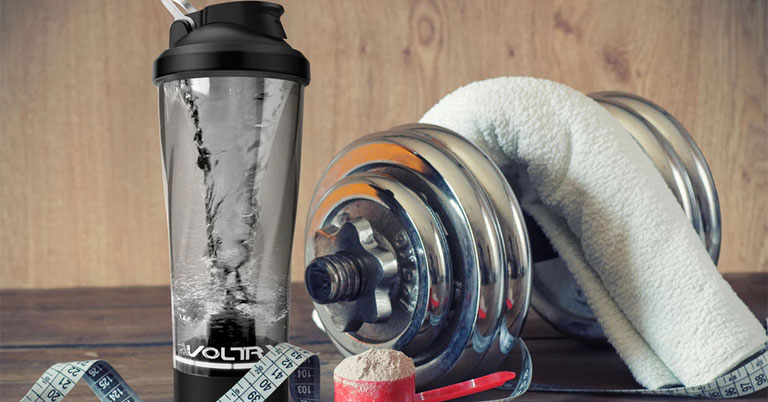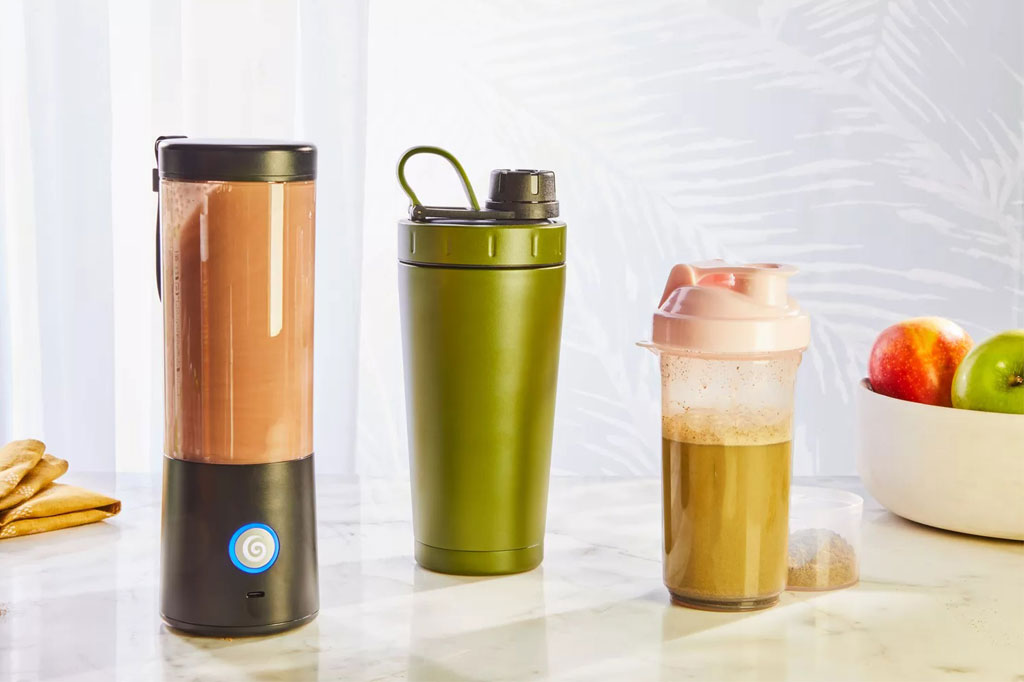Shaker bottles are popular tools used for mixing powdered supplements, protein shakes, and other beverages. They typically consist of a container with a lid and a mixing mechanism to help blend the ingredients effectively. There are three common mixing mechanisms typically used by shaker bottle manufacturers: mixing ball, mixing grid, and motorized mechanisms. Let’s compare these mechanisms:
Mixing Ball

A mixing ball, often made of stainless steel or plastic, is a spherical object placed inside the shaker bottle. When the bottle is shaken, the mixing ball moves around and helps break up clumps of powder and blend the ingredients. Mixing balls are simple and easy to use. They work well for most powdered supplements and protein shakes. They are cost-effective and do not require any external power source. However, there can be instances where the mixing ball doesn’t fully dissolve all the clumps, especially with thicker ingredients.
Pros
- Inexpensive and easy to use.
- Portable and doesn’t require power.
- Suitable for simple mixing tasks.
Cons
- May not be as effective at thoroughly mixing all ingredients.
- Can produce noise during shaking.
- Limited to manual shaking for mixing.
Mixing Grid (Mesh)

A mixing grid or mesh is a plastic or metal insert with a grid-like pattern. It is placed inside the bottle. As you shake the bottle, the mixing grid helps break down clumps and ensures thorough mixing by forcing the liquid through the grid’s openings. Mixing grids generally work well to create smoother, lump-free shakes compared to just a mixing ball. They may be slightly more effective than mixing balls, especially with ingredients that tend to clump easily.
Pros
- More efficient than a mixing ball in breaking up clumps.
- Provides better overall mixing compared to a mixing ball.
- Less noisy during shaking.
Cons
- Still relies on manual shaking.
- Some designs may be challenging to clean due to small openings.
Motorized (Electric) Mechanism

Some shaker bottles come with built-in motorized mechanisms powered by batteries or rechargeable USB connections. These motorized mechanisms automatically mix the contents when activated, eliminating the need for manual shaking. They are generally very effective at thoroughly mixing ingredients, including those that are difficult to dissolve with manual methods. Motorized shaker bottles are convenient, but they tend to be bulkier and more expensive than traditional shaker bottles with mixing balls or grids. There’s also a maintenance aspect involved with ensuring the motorized mechanism is clean and functioning properly.
Pros
- Hands-free operation with automated mixing.
- Typically offer more thorough mixing compared to manual mechanisms.
- Some models have variable speed settings.
Cons
- Generally more expensive than manual shakers.
- Require batteries or charging.
- Bulkier and less portable than manual shakers.
Conclusion
Choosing the right mixing mechanism depends on your preferences and the type of beverages you’re preparing. If you prefer a cost-effective and straightforward solution, a shaker bottle with a mixing ball or grid might be suitable. For those who prioritize convenience and a high level of mixing performance, a motorized shaker bottle could be a good option.
Remember that regardless of the mixing mechanism, proper cleaning and maintenance are essential to prevent odors, bacterial growth, and deterioration of the shaker bottle over time.

